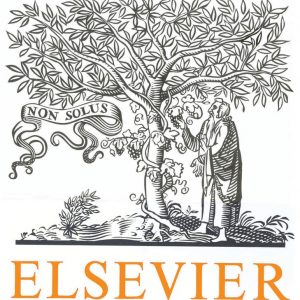دانلود رایگان مقاله لاتین فرآیند تصمیم گیری تسهیل کننده احساسات منفی از سایت الزویر
عنوان فارسی مقاله:
نقش تسهیل کننده احساسات منفی در فرآیند تصمیم گیری: سلسله مراتب رویکرد مدل اثرات
عنوان انگلیسی مقاله:
The facilitating role of negative emotion in decision making process: A hierarchy of effects model approach
سال انتشار : 2016

برای دانلود رایگان مقاله فرآیند تصمیم گیری تسهیل کننده احساسات منفی اینجا کلیک نمایید.
بخشی از مقاله انگلیسی:
2. Theory and background
2.1. Emotion Researchers believe that emotion is a perceptual and behavioral characteristic in humans (Chaudhuri, 2006; Dormann, 2003; Fridja, 1988). On the other hand, some researchers consider emotion as a response to external stimuli and attribute emotion to human's evaluation of information which results in action (Ortony, Clore, & Collins, 1988; Kalat & Shiota 2007). In their view emotion is the evaluation of events and their meanings. In this study we employ the latter view, since we considered emotion as internal factor in response to external positive or negative stimuli. Emotions are complex reactions to outside stimuli that engage mind and body as well (Dormann, 2003), and are either positively or negatively affective states (Frijda, 1988a,b). O'Shaughnessy and O'Shaughnessy in their book “Marketing power of emotion” (2003) define emotion as “an experience that is used to cover a variety of mental states and bodily processes that arise from highly positive or negative appraisals of some real or imagined event, action, or attribute” (p. 20). Reading (2011) defines emotion this way: “Emotions convey qualitative types of evaluative information about the world around us, which helps us navigate our way through it” (p. 111). In another study focusing on responsive behavior of emotion, emotion is defined this way: “valenced reactions to events, agents, or objects, with their particular nature being determined by the way in which eliciting situation is constructed” (Ortony et al., 1988, p.13). Since understanding emotion is complex, researchers tried to classify emotion in order gain a better understanding. Ortony and Turner (1990) reviewed literatures on emotion and concluded that different researchers have studied and categorized emotion based on different approaches (Arnold, 1960; Ekman, Friesen, & Ellsworth, 1982; Frijda, 1986; Gray, 1982; Izard, 1971; James, 1884; McDougall, 1926; Mowrer, 1960; Oatley & Johnson-Laird, 1987; Panksepp, 1982; Plutchik, 1980; Tomkins, 1984; Watson, 1930; Weiner & Graham, 1984). One way of classification is to classify them as primary and secondary emotions. Another way is to separate them as positive and negative emotion. In a key study, Laros and Steenkamp (2005) studied a large body article on emotions in consumer behavior and psychology area and identified different terms for emotions. First they categorized these emotions in positive and negative categories. They identified 172 terms for negative emotion and 140 terms for positive emotions. Also after further investigation they set 4 subsets for each category. They argued that despite the wide divergence of emotion in studies and different ways of measuring, classifying emotion as positive and negative is the most popular conceptualization. In that study they employ a cluster and hierarchical approach and identify 8 emotions as main positive and negative, respectively contentment, happiness, pride and love; anger, fear, sadness and shame. In this paper this classification is employed in order to measure positive and negative emotions. Also Richins (1997) classifies emotion in three categories, negative, positive and other (Table 1).
برای دانلود رایگان مقاله فرآیند تصمیم گیری تسهیل کننده احساسات منفی اینجا کلیک نمایید.
کلمات کلیدی:
How Emotions Affect Decision Making - Strategy+Business https://www.strategy-business.com/article/09413d?gko=25b9b Nov 24, 2009 - Emotions can get in the way of rational decision making. ... This paper explores the role of negative emotions in decision making, revisiting the ... How Your Moral Decisions are Shaped by a Bad Mood - Scientific ... https://www.scientificamerican.com/.../how-your-moral-decisions-shaped-by-mood/ Mar 12, 2013 - For example, moods could influence the thought process itself. ... see how more specific emotions might influence our moral decision-making. Emotional Decision Making www.decision-making-solutions.com/emotional_decision_making.html Emotional decision making can improve decisions when managed as part of the ... as well as negative effects of emotions in the context of making decisions. ... benefits and difficulties that emotions present to the decision making process. being emotional during decision making—good or bad? - NCBI - NIH https://www.ncbi.nlm.nih.gov › NCBI › Literature › PubMed Central (PMC) by MGU SEO - 2007 - Cited by 218 - Related articles The first, which we call feeling-as-bias-inducer, suggests that individuals' feelings induce various forms of bias into the decision-making process that skew their ... [PDF]Emotion and decision-making - UCSD Cognitive Science - University ... www.cogsci.ucsd.edu/~ajyu/Papers/tics12.pdf by MP Paulus - Cited by 93 - Related articles Emotion processing and decision-making are integral aspects of daily life. .... have both quantita- tive dimensions (e.g., degrees of feeling good or bad) and. Searches related to negative emotion in decision making process how emotions affect decision making emotional decision making vs rational emotional decision making examples how your emotions influence your decision making explain the role that emotions play in decision-making emotional decision making in business emotions and decision making process logical vs emotional decision making
